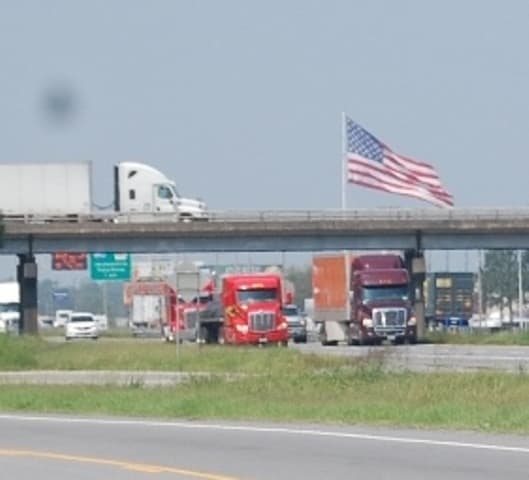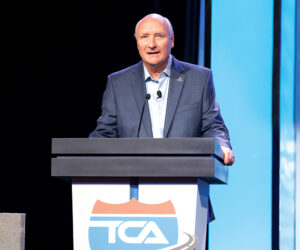WASHINGTON — The for-hire trucking industry has lost 9,300 jobs the past two months, according to the Department of Labor’s monthly job report released Friday, which showed that overall, U.S. employers added a modest 136,000 jobs in September, but enough to help lower the unemployment rate to a new five-decade low of 3.5%.
Data from the Bureau of Labor Statistics showed that for-hire trucking, which includes local, regional and over-the-road companies, lost 5,100 jobs in August and another 4,200 in September.
The BLS said for-hire trucking has lost 4,700 jobs in the first nine months of 2019.
“One reason for the decline is that private fleets have been adding capacity and that’s taking freight out of the fore-hire market,” said Kenny Vieth, president and senior analyst at ACT Research. “So, they are pulling freight out of an already slowing for-hire freight market.”
ACT Research reported September 27 in the latest release of the ACT For-Hire Trucking Index, based on August data, trucking retrenched to contraction in all categories after the large and partly anomalous improvement in July.
The Volume Index pulled back to 48.0 in August, from 56.7 in July (seasonally adjusted). The August Pricing Index, at 47.1 (seasonally adjusted), also returned to negative territory after stabilizing to 50.3 in July.
“While the strong consumer plus pre-tariff inventory building could still help volumes into the holidays, it appears inconsistent in the for-hire market, due in part to the weak manufacturing sector,” said Tim Denoyer, ACT Research’s vice president and senior analyst. “We think the addition of private fleet capacity is also partly responsible. Our for-hire respondents have stopped adding capacity, yet retail tractor sales data tell us capacity is growing. This will likely keep peak season muted in the for-hire market, with seasonal strength still likely closer to the holidays.”
Avery Vise, vice president of truck at FTR, said that as a result of the positive numbers in 2018, carriers began hiring, and that hiring reached a peak right as the demand for those drivers began to soften.
“Since January, the industry has been in a holding pattern,” Vise said.
He also pointed to trucking company failures as another reason the industry is losing jobs.
“Through the first nine months of 2019, there have already been twice as many failures as all of 2018,” he said, pointing to rising insurance rates and companies that “didn’t handle the good times as well as they should have by not controlling costs” as two reasons for the higher number of failures.
“Carriers threw a lot of pay at drivers when things were good, and when things get tight, you can’t take those pay raises back,” he said.
Data on the long-distance segment of the for-hire trucking industry mirrors the rate for all for-hire trucking.
In August, the latest month for which data is available, the long-distance segment, which is primarily over-the-road trucking, lost 4,700 jobs.
As for the job market overall, hiring has slowed this year as the U.S.-China trade war has intensified, global growth has slowed and businesses have cut back on their investment spending. Even so, hiring has averaged 157,000 during the past three months, enough to absorb new job seekers and lower unemployment over time.
Despite the ultra-low unemployment rate, which dropped from 3.7% in August, average hourly wages slipped by a penny, the Labor Department said Friday in its monthly jobs report. Hourly pay has risen just 2.9% from a year earlier, below the 3.4% year-over-year gain at the beginning of the year.
The unemployment rate for Latinos fell to 3.9%, the lowest on records dating back to 1973.
With the U.S. economic expansion in its 11th year and unemployment low, many businesses have struggled to find the workers they need. That is likely one reason why hiring has slowed since last year.
But it’s likely not the only reason. The jobs figures carry more weight than usual because worries about the health of the U.S. economy are mounting. Manufacturers have essentially fallen into recession as U.S. businesses have cut spending on industrial machinery, computers and other factory goods. And overseas demand for U.S. exports has fallen sharply as President Donald Trump’s trade conflicts with China and Europe have triggered retaliatory tariffs.
A measure of factory activity fell in September to its lowest level in more than a decade. And new orders for manufactured items slipped last month, the government reported.
Persistent uncertainties about the economy in the face of Trump’s trade conflicts and a global economic slump are also affecting hotels, restaurants and other service industries. A trade group’s measure of growth in the economy’s vast services sector slowed sharply in September to its lowest point in three years, suggesting that the trade conflicts and rising uncertainty are weakening the bulk of the economy.
The job market is the economy’s main bulwark. As long as hiring is solid enough to keep the unemployment rate from rising, most Americans will likely remain confident enough to spend, offsetting other drags and propelling the economy forward.
But a slump in hiring or a rise in the unemployment rate in coming months could discourage consumers from spending as freely as they otherwise might during the holiday shopping season.
Consumers are still mostly optimistic, and their spending has kept the economy afloat this year. But they may be growing more cautious. Consumer confidence dropped sharply in September, according to the Conference Board, a business research group, although it remains at a high level.
Americans also reined in their spending in August after several months of healthy gains. The 0.1% increase in consumer spending that month was the weakest in six months.
Other parts of the U.S. economy are still holding up well. Home sales, for example, have rebounded as mortgage rates have fallen, helped in part by the Federal Reserve’s two interest rate cuts this year. Sales of existing homes reached their highest level in nearly 18 months in August. And new home sales soared.
Americans are also buying cars at a still-healthy pace. Consumers would typically be reluctant to make such major purchases if they were fearful of a downturn.
The Associated Press contributed to this report.
Lyndon Finney’s publishing career spans over 55 years beginning with a reporter position with the Southwest Times Record in Fort Smith, Arkansas, in 1965. Since then he’s been a newspaper editor at the Southwest Times Record, served five years as assistant managing editor of the Arkansas Democrat-Gazette in Little Rock and from November 2004 through December 2019 served as editor of The Trucker. Between newspaper jobs he spent 14 years as director of communications at Baptist Health, Arkansas’ largest healthcare system. In addition to his publishing career he served for 46 years as organist at Little Rock’s largest Baptist church.














